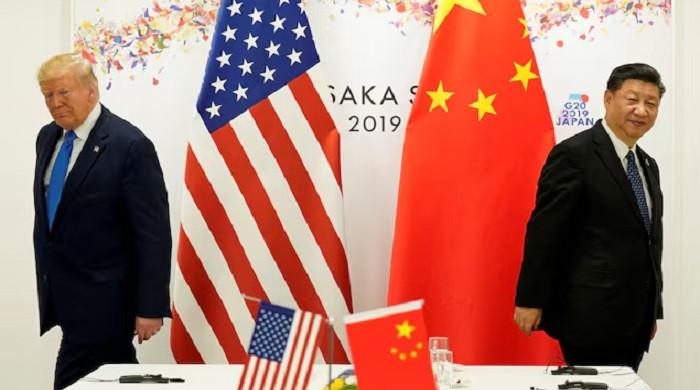- Software export controls will also come into effect.
- Trump says there is “no reason” to meet with Xi in three weeks.
- The divide between the two largest economies is leaving markets reeling.
China will impose port taxes on U.S.-owned, operated, built or flagged vessels on Tuesday, as a countermeasure to U.S. port taxes on China-linked vessels starting the same day, China’s Transport Ministry said Friday.
Later in the day, US President Donald Trump said he would increase tariffs on Chinese exports to the United States to 100% and impose export controls on critical software in retaliation for China’s export limits on rare earth minerals.
There are relatively few U.S.-built or U.S.-flagged ships that engage in international trade, but China will trap more ships with taxes on companies with 25% or more of their stock or board seats held by U.S.-domiciled investment funds, analysts said.
“This casts a wide net and could affect many public shipping companies listed on U.S. exchanges,” said Erik Broekhuizen, head of maritime research and consulting at shipping brokerage Poten & Partners.
“The potential impact is significant.”
On Tuesday, ships built in China – or operated or owned by Chinese entities – will also have to pay a fee on their first stop in the United States.
Some ships will have to pay fees to both China and the United States
US shipping company Matson told customers it was subject to the new Chinese port charges and had no plans to change its service schedule.
Also likely to be affected are CMA-CGM’s U.S. President Lines and Israeli company Zim, more than 25% of whose shares appear to be owned by U.S. entities, Lars Jensen, CEO of container shipping consultancy Vespucci Maritime, said on LinkedIn.
The charges in China and the United States will apply to 100 vessels owned by Poseidon’s Seaspan and chartered by container lines, Jensen said.
Maersk Line Limited, APL, Zim and Seaspan did not immediately respond to requests for comment on the charges.
Tanker operators are mostly based outside the United States, but they could be hurt by Chinese port taxes because they are listed in the United States, analysts say.
For example, Scorpio Tankers STNG.N has the largest and youngest fleet in the industry and is listed in the United States. He did not immediately respond to a request for comment.
Chinese port taxes “have caused turmoil in the tanker market,” Broekhuizen said in a client note, adding that many vessels that could be affected are already en route to China.
An analysis by Vortexa showed that 43 supertankers carrying liquefied petroleum gas, or 10% of the global fleet, will be affected by Chinese port taxes, said Samantha Hartke, head of Americas analysis for the energy research firm.
Vessels owned or operated by a Chinese entity will face a flat fee of $50 per net tonnage per voyage to Chinese-owned U.S. carrier COSCO 601919. The SS, including its OOCL fleet, is the most exposed with charges of around $2 billion in 2026, according to analysts. COSCO had no immediate comment.
China calls US fees discriminatory
The U.S. taxes on China-linked ships, following an investigation by the U.S. Trade Representative, are part of a broader U.S. effort to revive domestic shipbuilding and blunt China’s naval and commercial power.
“This is clearly discriminatory and seriously harms the legitimate interests of China’s maritime industry, seriously disrupts the stability of the global supply chain, and seriously undermines the international economic and trade order,” the Chinese ministry said.
The USTR office did not respond to a request for comment.
Over the past two decades, China has propelled itself to become the world’s leading shipbuilder, with its largest shipyards handling both commercial and military projects.
The fees announced by China, like those implemented by the United States, “add even more complexity and costs to the global network that keeps goods moving and economies connected, and risk harming exporters, producers and consumers at a time when global trade is already under pressure,” said Joe Kramek, president and CEO of the World Shipping Association.
Rates have been increasing for three years
For U.S.-bound ships docking at Chinese ports starting Tuesday, the rate will be 400 yuan ($56.13) per net metric ton, China’s Transport Ministry said.
This amount will increase to 640 yuan ($89.81) from April 17, 2026 and to 880 yuan ($123.52) from April 17, 2027.
For ships calling at Chinese ports from April 17, 2028, the fee will be 1,120 yuan ($157.16) per net metric ton.
Tensions between China and the United States have escalated since September, with the two superpowers struggling to move beyond their trade truce – a 90-day break starting August 11 that ends around November 9.
Retaliatory measures imposed this year in the U.S.-China trade war have significantly reduced Chinese imports of U.S. agricultural and energy products.




